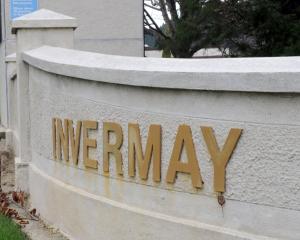An exodus of leading New Zealand scientists could occur after the restructuring of AgResearch's Invermay facility, former Invermay director Conway Powell says.
Dr Powell, a scientist, said he had major concerns about the future of agricultural science with AgResearch planning to reduce staff numbers at Invermay by 85 and at Ruakura by 180.
If the proposal went ahead, those staff would be required to move to either Lincoln or Palmerston North.
''I know how scientists think. I was one myself. If they are based in Dunedin and there are no jobs, where do they go?
"People will think that if they have to move to Canterbury, they may as well look to Australia and the United States, for both better jobs and better pay.''
Some people would not shift, for personal reasons, and instead stay and look for something else, he said.
Staff working at Invermay confirmed this week that offers were already coming in from overseas for some scientists.
Such offers were being considered. Not many wanted to shift to Christchurch or Palmerston North and staff said the mood of people at Invermay was at rockbottom.
Already, a group of staff was being made redundant from the reproductive and developmental biology group - spread across Invermay and Ruakura - and most of the 13 jobs being lost were at Invermay.
Negotiations on those redundancies had lasted more than a year and the final numbers were decided six to eight weeks ago.
Two of the staff had already left, but another seven or eight people were still to lose their jobs. Eight of the 10 positions had been filled and the remaining two would be confirmed next week.
Staff told the Otago Daily Times that of the 30 people expected to be left at Invermay after the restructuring, 12 would be support staff and would not use the laboratories.
Environmental scientists worked mainly in the field and would not use the facilities, leaving very few people, if any, using the buildings.
There was concern for the fate of the farm, which would quickly become surplus to requirements, staff said. Dr Powell was the Invermay director between 1989 and 1992 and arrived at the facility to carry on the ''outstanding work'' carried out by Jock Allison in the mid-1980s.
World-leading research was being undertaken at Invermay, particularly into deer and sheep breeding. Genetic research carried out at Invermay had significantly altered New Zealand's sheep flock.
The decision to reduce numbers and services from Invermay was a waste of resources, he said.
A former director of Invermay, Keith Steel, had worked hard on creating strong connections between the University of Otago - one of New Zealand's leading research institutions - and Invermay.
Their combined efforts in genetics had been world-class, Dr Powell said.
When he was director, Invermay had about 200 staff, carrying out animal and plant research and research on novel crops.
''There was a big base of close connections with the university and there is no reason that should not continue. It is ridiculous to split up research connections with the university.
''Leaving just 30 people at Invermay is a gross waste of the infrastructure built there.''
Asked about the justification put forward by AgResearch chief executive Tom Richardson about the value of having scientists working in close proximity in the Lincoln and Palmerston North hubs, Dr Powell said that made sense if an organisation was starting from scratch.
In that case, that mix would come up.
However, things changed over time and what worked tomorrow might not work in five years' time. Research could be carried out at a distance, as could collaboration.
Dr Richardson said every effort was being made to accommodate the needs of staff.




